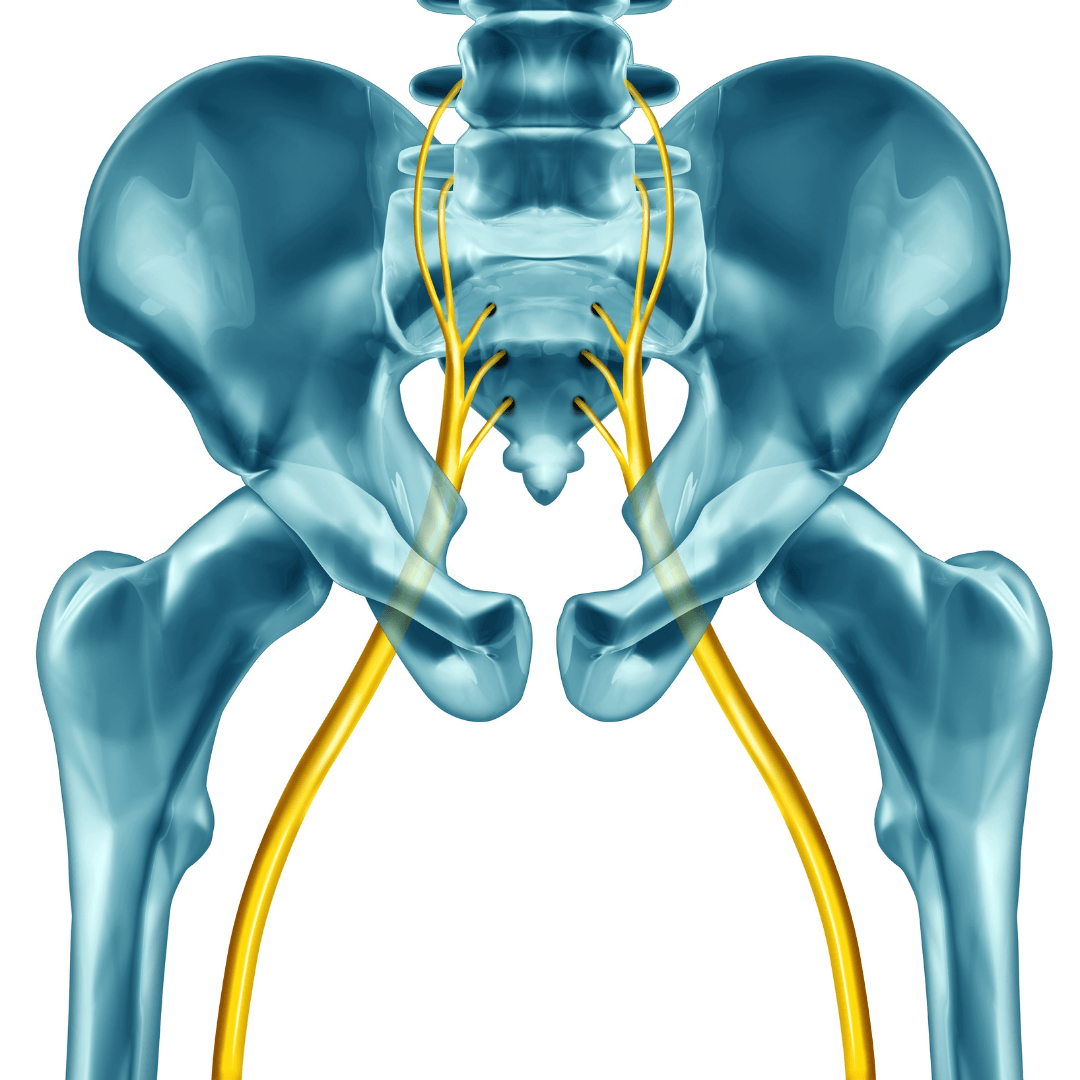Suffering from Sciatica?

If you have ever experienced a pain radiating from your low back, through your hips, and down one leg - you may have felt the effects of sciatica. In this particular blog post, we will explore what you need to know about sciatica and offer some recommendations to bring some relief.
What is Sciatica?
The sciatic nerve starts from the low back and runs down each leg ending at the back of the heels. The term 'sciatica' is used to describe the pain felt when the sciatic nerve is irritated.
This condition is different from typical low back pain in that it results directly from the sciatic nerve, rather than the spine itself. This nerve serves a vital function and can affect many muscle groups such as the hamstrings, calf muscles, lower leg muscles, and some foot muscles. The pain is often exacerbated by twisting, bending, sneezing or coughing.
What causes sciatic pain?
Research has shown that an estimated 90% of sciatica cases are caused by a herniated disc where the nerve root is compressed. The nerve root compression could have occurred from an injury, age-related wear and tear, lumbar stenosis or piriformis syndrome.
What are the symptoms of sciatica?
The most common complaint is pain radiating down the back of the leg often reducing mobility.
Who is most at risk for sciatica?
While research is still ongoing, it is estimated that:
• 5-10% of patients with low back pain often have it,
• 10-40% of people experience it in their lifetime.
The identified risk factors that increase the chance of developing sciatica are:
• Age
• Height
• Mental stress
• Cigarette smoking
• Occupations such as Machine Operators or Truck Drivers
How is sciatica diagnosed?
When a patient presents with complaints of pain radiating down their leg(s), Dr Vollrath will conduct a full history and physical examination to determine whether the sciatic nerve is to blame. If there are any other red flags present, Dr Vollrath will often work as part of a patient's health care team to identify the cause. For example, if a condition such as Cauda Equina syndrome is suspected – Dr Vollrath will recommend advanced imaging to determine if a Surgeon's consultation should be considered.
How is sciatica treated?
There are several treatments that Dr Vollrath can offer. Such as:
• Lifestyle changes such a diet and/or weight loss
• Physical activity
• Acupuncture
• Spinal manipulation
What can you do at home?
Talk to Dr Vollrath to ensure you are doing everything you can to improve your condition at home. Dr Vollrath may recommend:
• Using proper lifting techniques
• Go swimming, or try aqua fitness
• Using hot and cold packs for comfort
• Alternative between sitting and standing frequently
• Practice good posture
• Improve your core strength through exercise
• Gently stretch out your lower back and hamstrings
• Take walks regularly
How can you prevent sciatica?
Exercising regularly and paying attention to your posture can significantly reduce your chances of developing sciatica.
Dr Vollrath is a spine, muscle, and nervous system expert who provides effective treatment to promote health, alleviate pain, and improve his patient's quality of life. If you're struggling with sciatica and want relief, call Core Chiropractic Center to book a consultation today.



